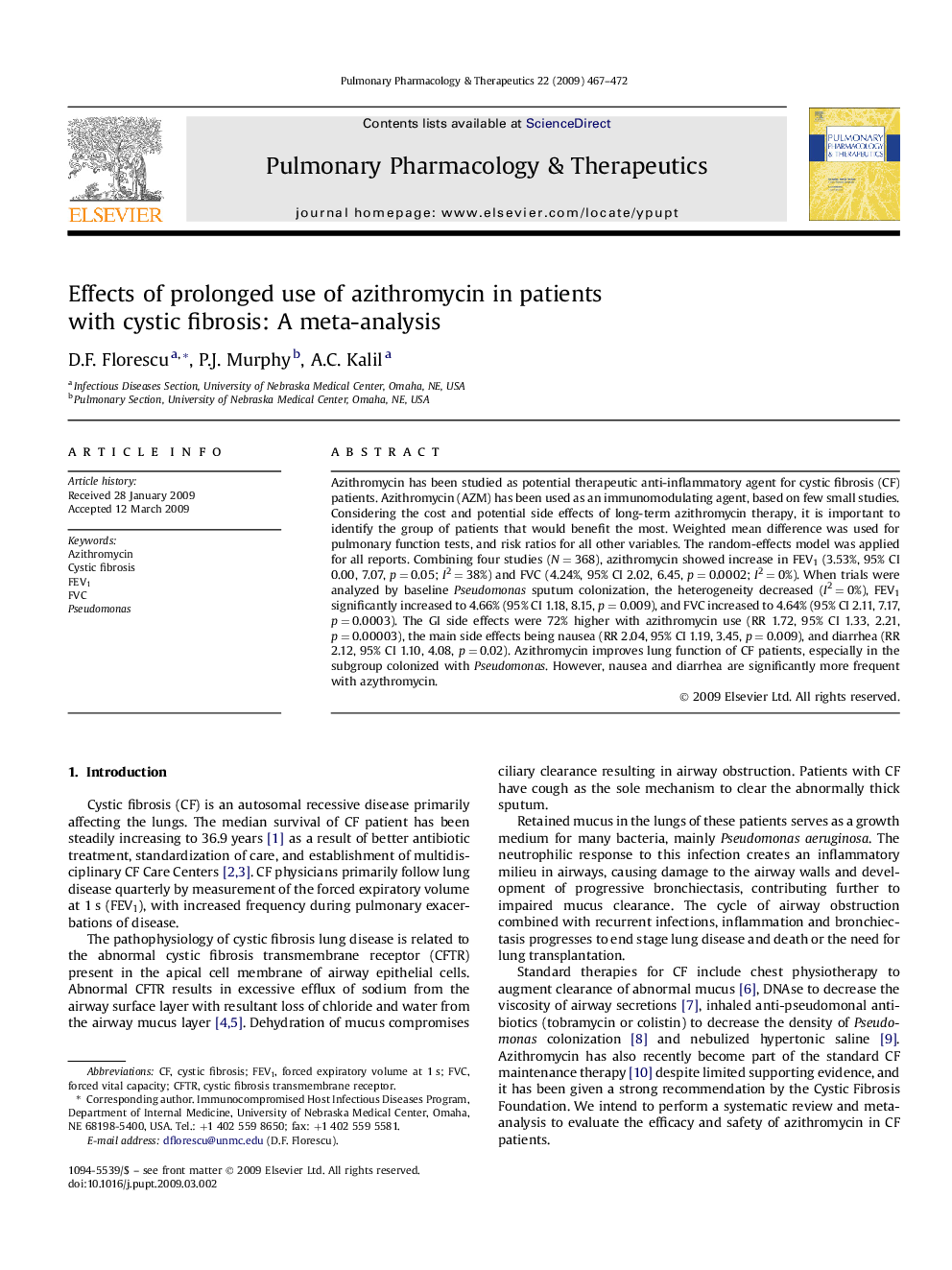| Article ID | Journal | Published Year | Pages | File Type |
|---|---|---|---|---|
| 2567726 | Pulmonary Pharmacology & Therapeutics | 2009 | 6 Pages |
Azithromycin has been studied as potential therapeutic anti-inflammatory agent for cystic fibrosis (CF) patients. Azithromycin (AZM) has been used as an immunomodulating agent, based on few small studies. Considering the cost and potential side effects of long-term azithromycin therapy, it is important to identify the group of patients that would benefit the most. Weighted mean difference was used for pulmonary function tests, and risk ratios for all other variables. The random-effects model was applied for all reports. Combining four studies (N = 368), azithromycin showed increase in FEV1 (3.53%, 95% CI 0.00, 7.07, p = 0.05; I2 = 38%) and FVC (4.24%, 95% CI 2.02, 6.45, p = 0.0002; I2 = 0%). When trials were analyzed by baseline Pseudomonas sputum colonization, the heterogeneity decreased (I2 = 0%), FEV1 significantly increased to 4.66% (95% CI 1.18, 8.15, p = 0.009), and FVC increased to 4.64% (95% CI 2.11, 7.17, p = 0.0003). The GI side effects were 72% higher with azithromycin use (RR 1.72, 95% CI 1.33, 2.21, p = 0.00003), the main side effects being nausea (RR 2.04, 95% CI 1.19, 3.45, p = 0.009), and diarrhea (RR 2.12, 95% CI 1.10, 4.08, p = 0.02). Azithromycin improves lung function of CF patients, especially in the subgroup colonized with Pseudomonas. However, nausea and diarrhea are significantly more frequent with azythromycin.
